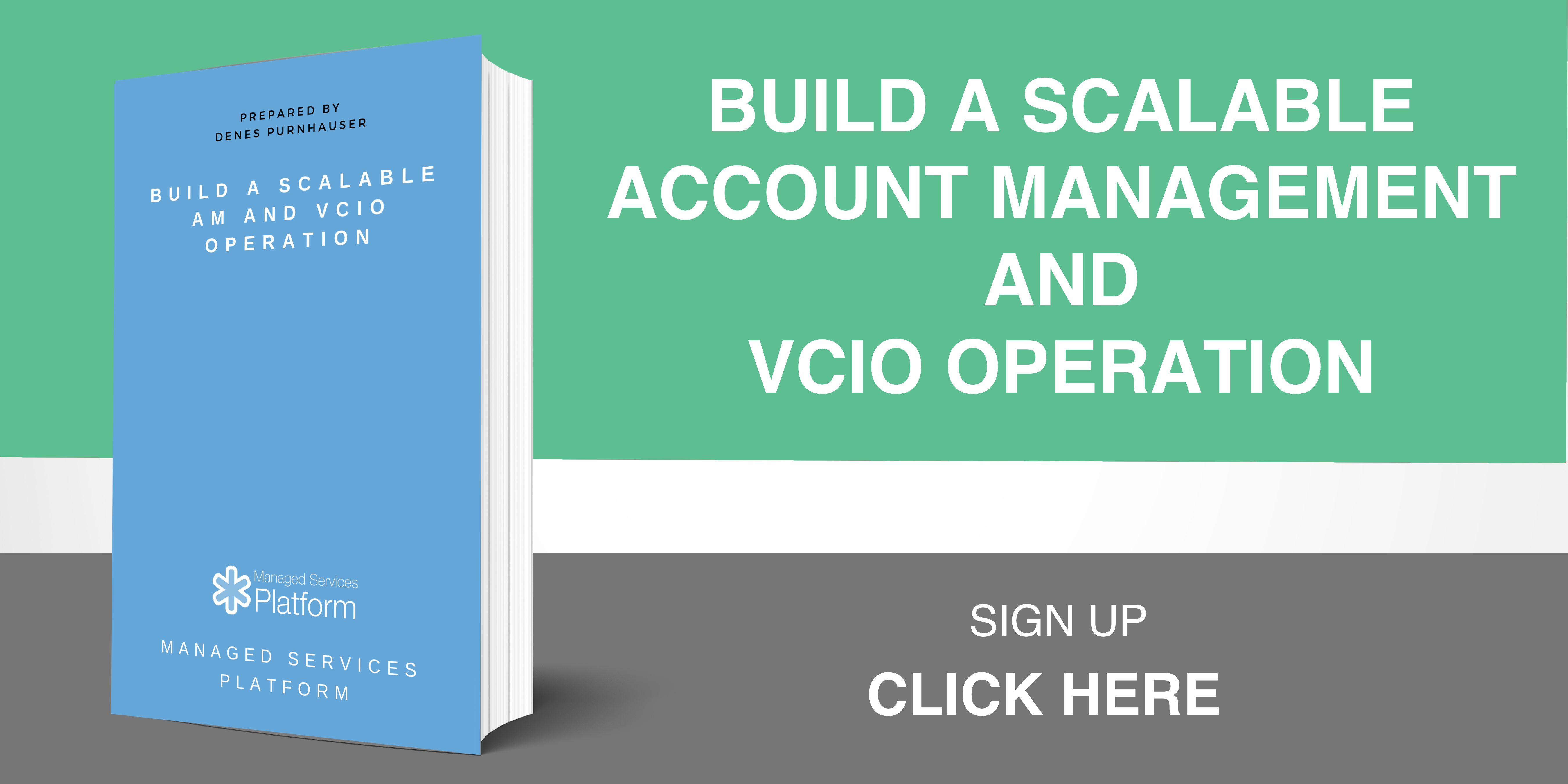
Here’s a mystery you all know all too well - pricing your stand-alone vCIO services so you’re not robbing your clients nor yourself...that trepidation when you’re putting together the proposal, or trying to ballpark a figure in a meeting. It’s always been a gamble. There’s a way to find the proper middle ground, following a simple process to help you to close more deals without risking a critical over or underestimation, of your client’s expectation or your services. Here is the formula...
We just call it a 20% rule....
The formula is quite simple. We take the client’s current expenses in managed services calculate 20% of it. This will be our baseline for a starter stand-alone vCIO package. Use this as the main rule of thumb, and we’ll take a look at some cases where we have to turn from this calculation.
Example. You’re talking with a 40 person firm eligible for a $125-per-user managed services program. That’s a $5000 MRR for the managed services. With your 20% stand-alone rate the virtual CIO program will end up at $1000 MRR.
Structure, manage and automate
your account management and vCIO procesess
Client point of view
Most often you’re selling the vCIO services as an extension of your managed services, and you’ve seen eyes spinning at the mention of the cost. But you know about the pricing effect: if the add-on service is too small, like 10%, they can feel it’s not worth mentioning, and why isn’t it in the package anyway? If it’s too much, like 40-50%, then it’ll come with the price of a totally different service category. We must keep an eye on our psychological influences.
- 20 % is an easier upsell to an existing company
- 20% is what you can give as a month of free trial
- 20% is what they’ll readily risk for a 3 month trial period
So from a buying perspective, it’s not disruptive, complex, nor risky. It’s the predictably happy medium.
Your point of view
We need to check the viability of this service from your end too. As we design a vCIO offering we must list out the diverse activities which are part of the package, check how frequently we do those activities, and calculate an annual workload, for an honest basis for the price. Usually we use $200 per hour to calculate a monthly service fee. With the 40 person client as an example with $1000 MRR, we’ll see 60 hours budgeted for a year, or 5 hours monthly. That’s a reasonable amount of work for that size of client.
We’ve developed four different vCIO Packages:
- vCIO Light - typically a teaser service at a cost of $250/month to perform, and great for triggering stand-alone services. It’s also good for small companies (check later).
- vCIO Basic - $1000 - $1500 MRR, suited to 30-40 person companies or bigger companies with less maturity. This is the typical bare minimum with no weekly cycles.
- vCIO Professional - $2500 - $3000 MRR, for the 40-70 strong SMEs where you can start to develop seriously and begin to integrate with the management team.
- vCIO Enterprise - $5000 - $6000MRR - when you’re going to nearly substitute a full-time CIO/ IT manager. This is only viable for 70+ situations.
If you’re interested in these packages, make a quick call and we’ll show you the processes, marketing, sales materials, workspaces and all the associated reports and tools we provide for a complete, professional execution.
Remark 1: Projects
Projects are never included with a stand-alone vCIO program, just annual planning, budgeting, some project scoping, some application selection, quarterly planning sessions, monthly reviews and so on. Every project is a separate item. If their IT strategy is to choose and implement a cloud based CRM solution and integrate it with Zapier to their accounting system, that’s a separate project. We can manage it as part of the service portfolio if someone else manages the project. If, however, we’re responsible for the implementation, that again is a separate line item.
Remark 2: Small Companies
As you can see, if you have no budget for at least 30-40 hours of work annually, even at $150/hour (which will end up at around $400 - $500 MRR) you cannot really accomplish anything as a vCIO. The $400 - $500 MRR with the 20% rule will give you the $2,000 MRR MSP service. Even if they have a $100/user rate it will work with a 20 person company. This clearly defines the boundary, that below 20 people there is no viable, profitable vCIO service possible. You can’t generate enough revenue, and the client will have no budget to execute projects. You might quote a $200 - $300 upcharge for "Client Advisory" services to perform the basic Account Management activities like QBR/Annual Planning and some consultation every quarter. Though extremely limited, this is their call. If they don’t want to pay for it, you still can’t do it for free.
Conclusion:
Don’t complicate. If the client asks about vCIO, just say: "Our rule of thumb is around 20% of what you pay for the managed infrastructure services." If they’re not interested to the service with this estimate, there’s no way you can deliver your services viably with a lower price point.
3 previously posted Managed Services Platform blogs about vCIO sales:
- How to Become a Trusted Advisor With Strategic Client Meetings
- Managed Services Platform vCIO Report 2019
- Managed Services Platform Account Management Report 2019
3 previously posted Managed Services Platform research about vCIOs


